Coach Evan is back with a match analysis from French Open 2022: Muchova vs Sakkari. Did you watch the match?
Muchova vs Sakkari, French Open 2022
Match Analysis by Evan Gaudreau
You can watch the highlights of the Muchova vs Sakkari match here.
Here’s the thing about analysis pieces. If I bang it out on the first watch, it’s going to be missing something. Maybe it’s the way I process a match. Maybe my brain doesn’t work fast enough. Either way, there’s always something new that pops up the second time around. After watching the first three games last night, I shut the computer off.
I was frustrated.
There seemed to be nothing going on….and I wasn’t in the mood to watch so many unforced errors.
Waking up this morning, I thought about what I could be missing. Is there more than what we see? Is there something going on behind the scenes? Or is it the way the player’s process strategy that makes them come out of the gates like bucking horses….all fired up and nowhere to go to.
Unforced error city.
That’s a place I’m not particularly eager to go to.
What is Sakkari up to?
Lately, I’ve been thinking about how players process information or strategy and use it during matches.
After the first three games, I’m scratching my head.
What is Sakkari up to?
A thought popped into my head. Maybe she trains technical. Maybe she warms up and rips balls here and there, working on a form, feel, and power randomly….yet the coaches are asking her to do a specific strategy during the match that contradicts the training sessions.
For juniors at home, it’s like going to your lessons, hitting back and forth with the teaching pro most of the lesson.
Crosscourt.
Down the lines.
And then playing points and wondering why the student is hitting back to you when you want them to hit the open court.
Does that make sense?
Dichotomy on the WTA Tour
On the WTA Tour, I feel that a similar problem is happening. I feel as though the training and the strategic planning aren’t meshing.
There’s a dichotomy.
The coaches assume the player can go out there and perform a strategy they haven’t worked on (too much technical training).
Is that why the women’s game is so wishy-washy?
Could it go deeper?
Would deeper investigation reveal the “blocker” seed was dropped at ten or twelve years old?
By the parents!
Parents! What you say to your kid’s matters and the words you use are triggers that hold them back.
Easy example.
Do you leave the court on a negative? Are you constantly telling them what they did wrong? How you talk to your kid matters.
No shit!
We’re missing the thing that’s right in front of us.
I’m just as guilty as anyone.
(There is a time and place for negative feedback, though, when you’re planting a seed that needs to be soaked in).
Two things.
One is that my daughter left the court after making an error on her last shot last night. The Dad in me wanted to feed her another ball until she made it, and the coach in me said Oh Well! Maybe she will work harder the next time she’s on the court and not make that error. I joked about it in front of her with another parent.
“The Dad in me what’s to feed her another ball,” I said to another parent and a coach. “It’s funny as a parent. We’re always wanting to baby them.”
The Mom laughed.
“Before I had kids, I had big ideas….like how tough I would be on my kids. So they can learn to be strong..”
Etc. Etc. Etc.
“When I was a kid, I’d go home and beat walls against the garage after leaving a hit like that. I’d obsess over the mistake and try to make sure that never happen again.”
Life is not always so hunky-dory.
Sometimes it’s good to leave the court on a negative.
Sometimes!
The players who get brow-beat after every hitting session are the ones who lose any passion they had for the game. They are ready to call its quits by the time they’re eighteen.
They are sick of the B.S.
Second thing.
So! I’ve been working on a specific combo/drill with my daughter for the last three-four weeks. It’s more of a patient, return-type philosophy pattern. When she was playing points, the girl she was hitting with was pushing her around the court like a rag doll.
I was boiling inside.
Why was she letting the girl run her around like that and why was she hitting everything into the wheelhouse?
And that’s why I woke up with the thought about how coaches train their player’s effects how they construct points.
Duh!
Why would I think my daughter would go on attack mode if we have been working on defense?
I feel lucky in the sense that a lightbulb went off. How often do we blame our kids or someone else for not getting it when the person who doesn’t get it is staring us in the mirror?
Guess what we’re working on today?
Keeping the ball out of the middle and attacking from the first ball. I’ve been spending too much time on defensive patterns….Time to give her some cake instead of a heavy dose of veggies.
Back to the match.
Did Sakkari’s coach talk too much about the strategy going into the match and not training the patterns?
And how much time do they have between tournaments to work on stuff?
Sakkari opened up the match by returning to the center of the court and hitting her first ball to the backhand corner on her first service game.
SO far, she’s down 3-0.
But on her second service game, she hit the first balls over to the forehand side and had an easy hold.
I’m curious to see what strategy will continue.
Always playing short points is a volatile strategy.
It’s streaky.
This is why Barty will be missed in the women’s game. But Jabeur is interesting to watch.
A song popped into my head
A song popped into my head…by Band of Horses. “Casual Party”
The chorus line cracked me up.
“Blind faith, it don’t sit right
You got to rage wound so tight
I wanna leave
Best get out of the way.”
Why is this popping into my head right now?
It makes me think of players playing aggressively and listening to coaches’ faulty strategies.
Having “Blind Faith” in a strategy and how it doesn’t feel right….and after being down in the set, it’s time to “rage” and play the game plan that makes sense to you. And the coach or parent needs to “get out of the way.”
Not a bad song.
Give it a go.
Anyway.
1-4. 0-15. Funny point.
Sakkari gets a lob return that lands at no man’s land. She hits it inside out and Muchova hits a backhand down the line. Sakkari tries to hit an angle drop volley from the service line that sits up…
Listen!
If you can get away with dropping a volley at the service line and winning the point, the player on the other side isn’t that strong or smart.
If you’re working on volleys at home, discipline yourself only to drop when you are halfway up the service box. Develop good habits. Open court drops or deep volleys can work, but they must be “sitters.”
Low volleys from the service line should go forward (for starters) or go to the center of the court based on the side of the court you are on.
For instance, If your opponent is hitting a backhand passing shot from the Ad side singles sideline, down the line, and gives you a low volley and you hit your low volley to the Ad side (straight ahead) and stick it “off-center” what are they going to do with it.
Go right back to you?
Probably not.
Either way, you put the pressure on them. They have one pass option. Inside out. Or a lob. If you hit the volley to the open court, the pressure is on you. Your opponent has more options. As you recover to the other side of the court, they can go back crosscourt….if you don’t recover enough, then they have the line and if you commit too hard (a lot of coaches teach to close the net hard…a lot of those players get lobbed by junky lobs and lose the point).
Again.
There is a time and a place for everything.
You can hit open court volleys, but you have to plan and establish a pattern. Know the game score. I want to find a point that means little to me and see how my opponent covers the open court volley.
Say I’m up 3-0, 30-0. I might force my way in and “probe” my opponent’s open court passing shot. I don’t’ want to wait until they get comfortable in the match, and it’s 4-4 and 30-all to find this out.
So many players on all levels don’t probe early in the match, which is an excellent time to figure out your opponent and “squeeze the pressure” on.
And it’s so hard as a coach to “sell” discipline.
Don’t confuse discipline with pushing the ball back over the net.
I feel the minute WTA players get traction during the match and open up their game, the more they shoot themselves in the foot right after and give the momentum right back.
“My Name is Rex, and if you study my eight-week program, you will learn a system of patterns that will make you never lose a match again.”
How many Rex’s from Napoleon Dynamite are out there??
It’s funny how our memories play tricks on us.
Regardless of the score…we could be up 5-2, down 2-5, or whatever and the second we get some traction we go “bigger.”
Why is that?
What patterns and bad habits have we developed that keep getting in the way of progress?
How many people repeat the cycle….on the tennis court, at work, in our daily lives?
“I’m so sick of your shit”
“I’m so sick of your shit,” my college coach said. “You go for the corners constantly. You need to be more consistent!”
I wasn’t about to lay down and push balls back over the net. Every time I did that, I got pushed around and felt like a chump.
I felt like hitting out, and when I got grooved, I would take over the match. And it worked. Just not against the top players. I lost sets occasionally and was able to rebound in the third set….But I kept chasing it. I had won too many matches waiting for the streaks to happen. Blah. Blah. Blah.
“It’s like you didn’t think you lost the match,” he said.
“I didn’t,” I would say. “The other guy just pushed the ball back over deep. I played to win; he played not to lose.”
“Who won the match?”
“Who cares?” I said like a moron.
“One of these days, you have to wake up! And accept the fact that that guy beat you.”
Deep down, I knew he was right.
But I had dealt with so much mental bullshit from him that I didn’t want to listen.
Not from him.
“Stop believing whatever lies you’re feeding yourself and grow up.”
PTS Trigger.
The words, “Grow up.”
I heard it too many times from my parents. The rage in me wanted to rip his face off. I hate assholes. Call it oppositional behavior. Call it stupidity. I don’t listen to assholes either, even when they’re right.
Kind of.
After the season that summer, I ran the football stadium (privately) and got in ridiculous shape. I didn’t have to hit winners anymore. I could out-work my opponent.
What a revelation?
But the aggressive side had more reps in my mind and on occasion I would “panic” and resort to hitting a few “bailout” winners…
…and errors.
But I was learning.
Slowly.
I wish I had learned that when I was fifteen.
Back to the match again
One successful pattern keeps popping up during the match. Starting the point to Muchova’s forehand side, centered on the Deuce box, and then hitting the same side with a “pull” angled off on the second shot.
If it works on that side, could it work on the other side too?
At 4-5, 15-all, Sakkari hit a backhand up the line for a winner, off of a forehand down the line from Muchova.
I love those.
Line vs line.
But the opponent has to be conditioned to move to the crosscourt (or maybe if you weren’t so self-absorbed and watched your opponent practice, you’d pick up their training habits).
Muchova is susceptible to the double attack in the corners. She moves out so fast you can hit behind her. I wish Sakkari came out with that game plan.
If Sakkari serves down the “T” on the Duece side what are the options for Muchova?
1) Go to Sakkari’s forehand corner? Then Sakkari can pull the forehand cross-court, angled.
2) Go to Sakkari’s backhand; then she can start crosscourt on the first ball and “sneak” some backhands down the line to change it up.
3) Return to the middle. Then Sakkari can either double the ball back to the same middle location or pull the angle again.
I know it’s not that simple, but why not have that gameplan to start the match and not the
first ball to the backhand?
I also don’t think Sakkari has a solid backhand crosscourt to use strategically. Maybe she should add that into her game. Instead of Forehand. Forehand. Forehand.
Men are meatballs
Here’s the funny part that just crossed my mind. And it was right in front of me. Women process differently than Men.
Men are meatballs. But they’re highly competitive and stubborn. They think they know everything about everything.
Women are more trusting. At least they want to feel that you’re on their side. Maybe it’s part of their social aspect. So when a coach is telling them what to do, they listen. And want to be listened to.
Guys don’t care. Because in their head, they are smarter than everyone.
The point is that the WTA needs coaches like a horse whisperer. A dude who can relate, someone who has experience in that department. The problem is that many male coaches are meatballs and only know how to be a meatball.
Women don’t want meatballs!
Or so I’ve heard.
From older sisters, a wife, and four daughters.
I used to be a meatball until having four daughters taught me to look at things differently.
Rambling.
I’m stopping at the first set tie break.
At 3-3, Sakkari played not to lose. The strategy was to hit the ball in the center of the court and hope to win.
She lost the set.
There is so much potential in the women’s game. They need coaches who can communicate their way.
Not meatball to meatball.
The takeaway
It’s ok to have a game plan. But you also need to adjust and know when to adjust, and there’s no correct answer. Why doesn’t Sakkari attack the angles early in the match and realize that Muchova likes to continue moving in the direction her momentum is going? Does her coach analyze matches? If he did, why wouldn’t they change the strategy? Is he too insecure about delegating jobs and worried that he would lose his coaching position?
That philosophy holds back the game.
On all levels.
Guilty as charged.
Tennis is weird in the sense that there is no collaboration between coaches.
Next time you go out on the court, focus on “T” patterns and use the different combinations you can play by shifting your opponents body weight to the center of the court and then pick a side to hit your first ball to. Or serve wides and take your first ball back to the same location for a few games, half a set or a full set and then change the location.
Look what happens!
You’re opponent gets confused.
Worst case. Next time you practice play one set working on something and one set to win. You might learn something.
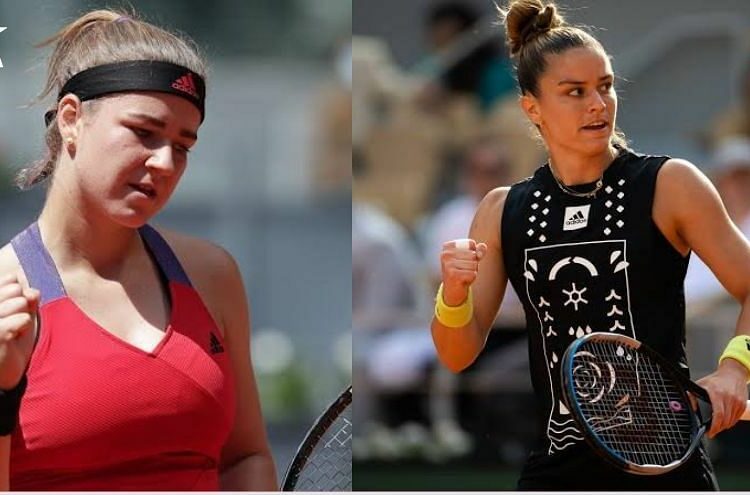


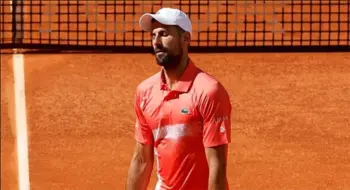
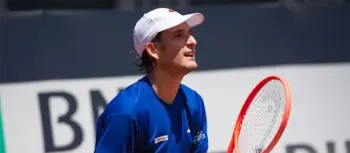
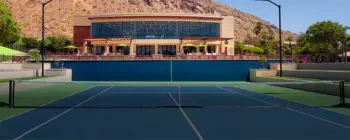
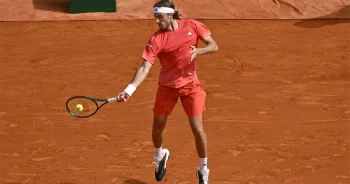
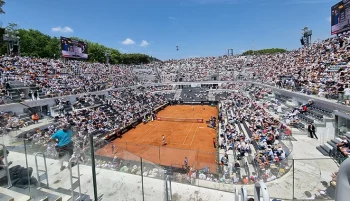
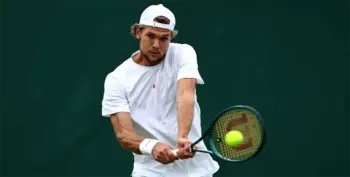
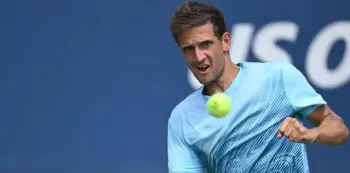
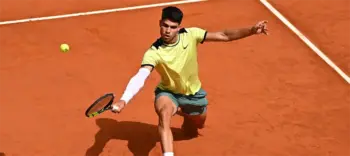
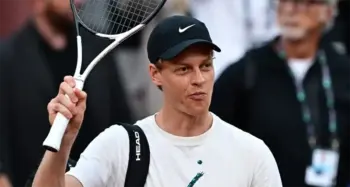
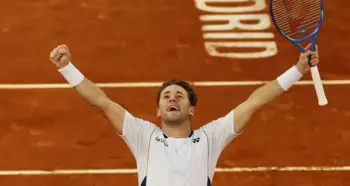
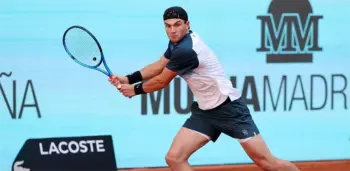
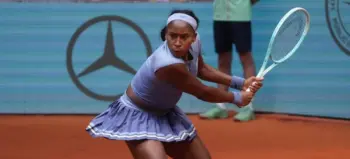

Dear Evan,
You have a gift of writing! You should write some short stories. Or a book. I would love to read it!